
In the tight-knit Filipino family culture, nothing can compare to the bond between siblings. Siblings share so much of their formative years and often grow up to stay close.
While your kids are growing up, it’s your responsibility as parents to cultivate a positive shared space for siblings within your home. Fortunately, there are many opportunities for you to create this type of space, particularly in a shared bedroom.
A shared bedroom can be one of the most special spaces in a home, not just for the parents but especially for the siblings who sleep, play, and grow together in that room. As children move from being playmates to lifelong friends, the bedroom they share becomes an essential space for their emotional and social development. Plus, the kids’ rooms also often double as a room for guests and family staying over.
Tips for Designing a Shared Bedroom for Siblings
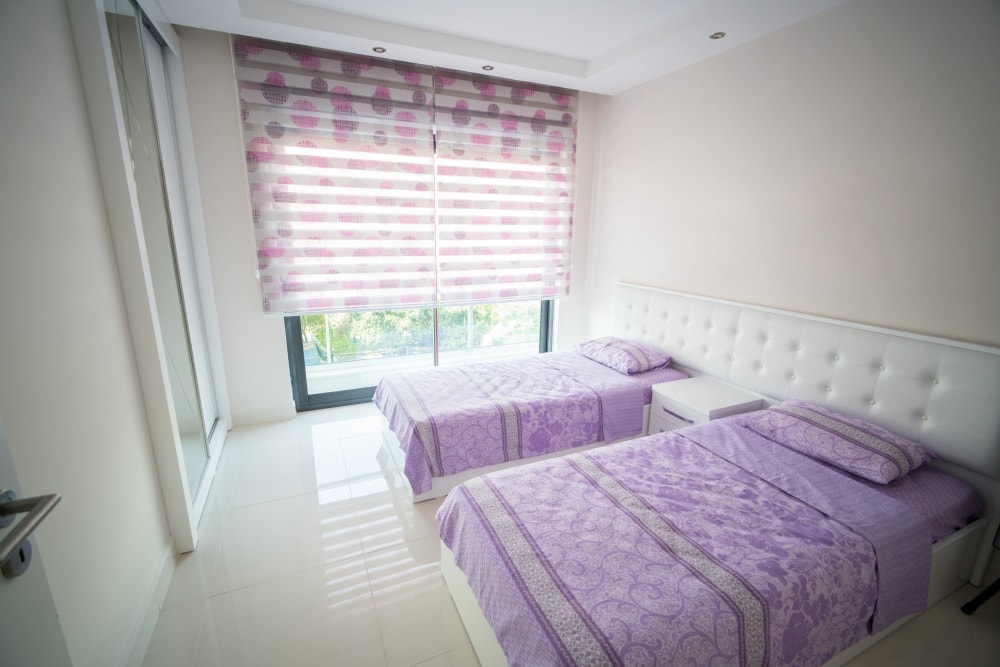
There are benefits to separate bedrooms as well as shared kids’ rooms. However, if your children are younger, having your kids share one room may be a smart way to encourage strong relationships. Creating a shared room that fosters positive relationships while also offering enough space for both siblings to grow is crucial.
The truth is that you don’t need to be a professional designer to get a well-designed shared bedroom for your kids. When you’re being thoughtful and creative, the design process will be fun and effective.
Here are some exciting and practical shared bedroom ideas you can try at home.
1. Consider the Age Gap Between the Siblings
When designing a shared bedroom, one of the first factors to consider is the age gap between the siblings. A shared room for younger kids will differ from a space for older kids, and this can significantly influence the room’s layout and design. Remember, a bedroom isn’t just for sleep.
For example, if there’s a gap in your kids’ ages, you might want to create more distinct spaces within the room. The younger one will often need space for play, while an older kid may need more quiet space for studying or hobbies.
Designing individual areas in the room will give each child a sense of ownership. This approach might include separate desks for studying or an extra storage area for clothes, books, and toys.
2. Maximize Floor Space with Smart Furniture Choices
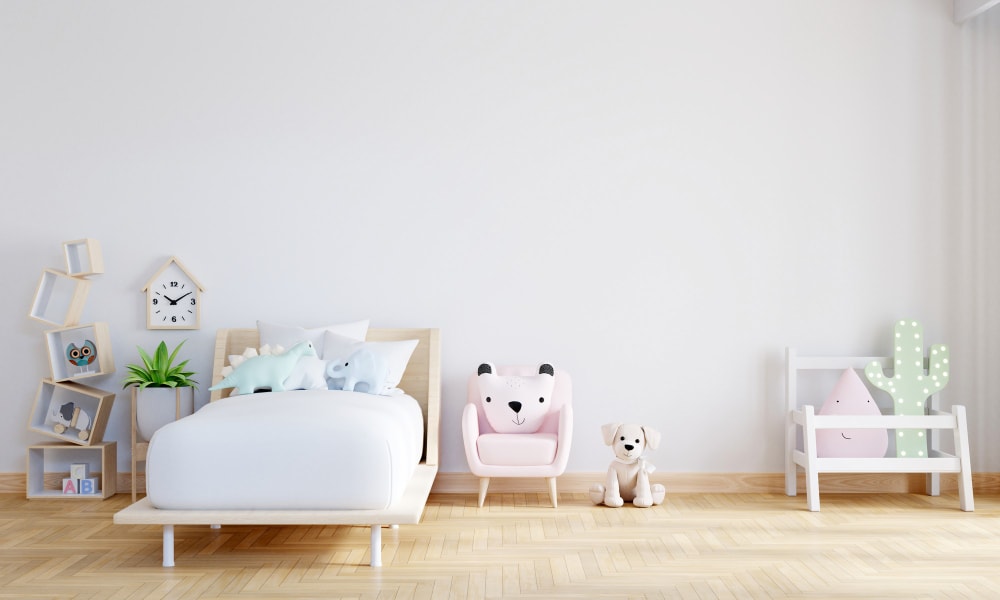
Maximizing floor space in a shared space is essential, especially in a small room. To save space, opt for bunk beds, loft beds, or twin beds arranged in a way that allows for ample walking room.
A bunk bed (instead of an extra bed or a second single bed, for instance) is a wonderful way to use vertical space, creating more room for play or study. You can also consider hanging shelves on the wall instead of standing shelves.
If your kids are different ages, a loft bed for the older sibling can free up space underneath for a desk or a cozy seating area.
3. Create Individual Spaces in the Same Room
Even though siblings share the same room, they still need their own space to feel like individuals, even if you have two boys or two girls – yes, even if they’re close in age. Recognize each child as their own person.
You can achieve this by incorporating personalized elements into each side of the room. For example, each sibling could have their own bed, separate dressers, and individual storage bins or shelves. Adding canopy beds or decorating each side of the room with their favorite colors (soft green for a serene girls’ room or vibrant blue for a lively boys’ room) creates a sense of ownership for each child. Bunk beds may also provide each child with more space and freedom to move while their sibling is asleep.
You can also use dividers to act as a moveable wall to provide each child with some privacy.
Additionally, a shared dresser can also be an effective way to organize their clothes while keeping the interior design cohesive. If space is a concern, built-in storage units can add extra storage without taking up precious floor space.
4. Play with Color and Interior Design Styles
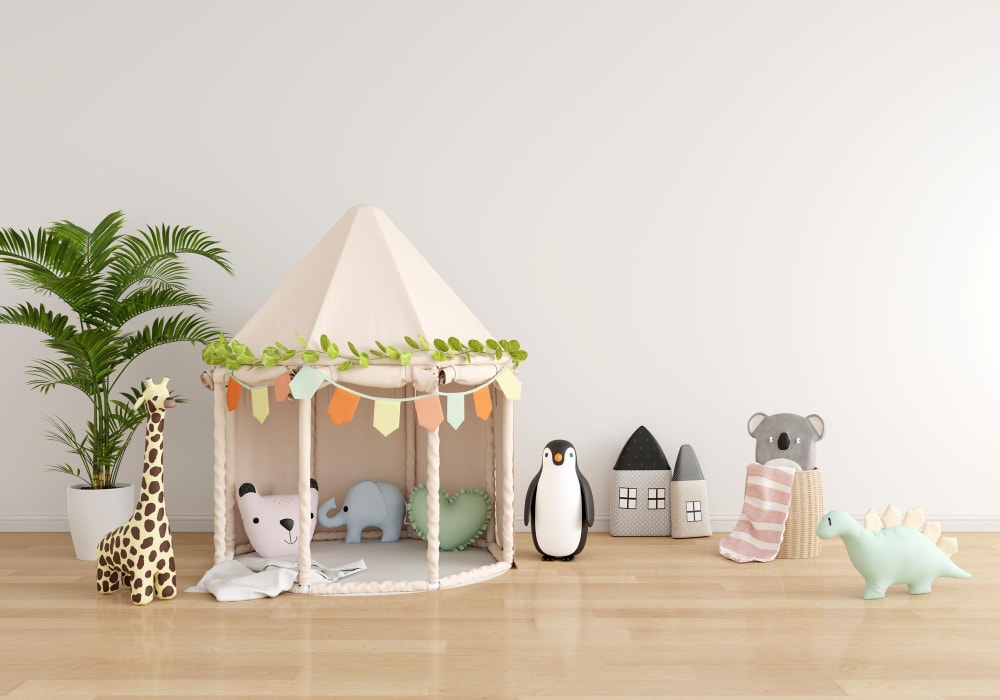
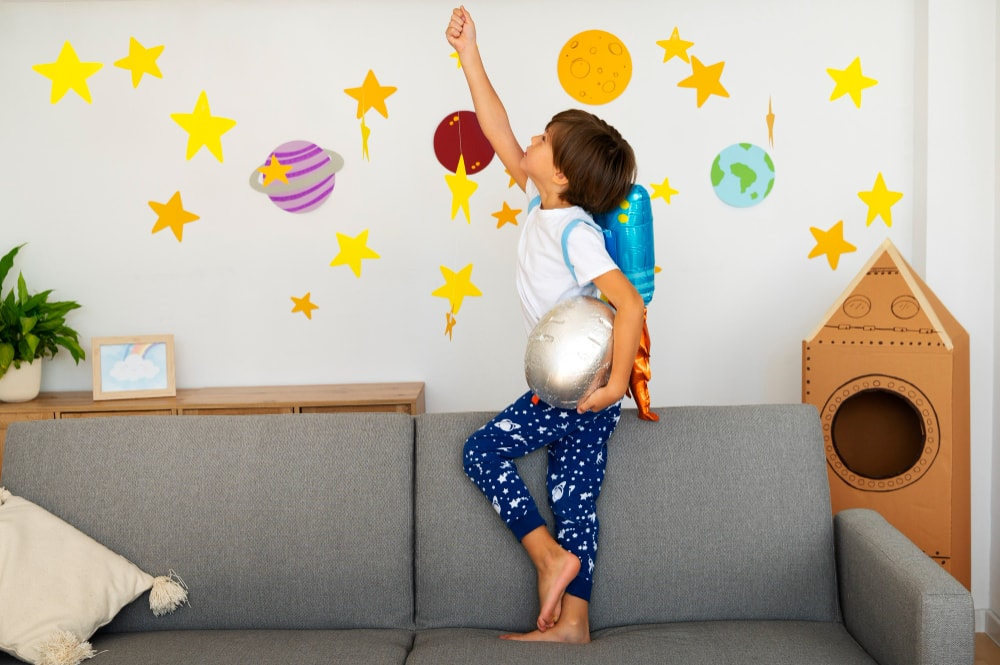
Designing a shared kids’ bedroom offers a chance to mix and match different styles while maintaining a harmonious look. A cohesive look can be achieved by choosing colors and furniture that complement each other. Consider using neutral tones, like light grey or mint green, with pops of color your kids love. This can create a balanced atmosphere that works for both boys and girls.
If the siblings are of different genders, the design should allow for a fun yet neutral space that both children can enjoy. Avoid making the room feel too “themed,” as the tastes of kids can change over time.
5. Provide a Study Area and Create Zones

As your children grow, their need for study areas and quiet zones becomes more important. Creating a study area in the shared bedroom can help each child stay focused on schoolwork while still being in the same room.
Whether it’s a shared desk or individual desks, make sure there’s plenty of light and storage for school supplies.
Additionally, consider creating distinct zones within the shared room. A cozy reading nook or an arts and crafts corner could allow each child to develop their individuality and interests.
6. Add Personal Touches and Fun Features
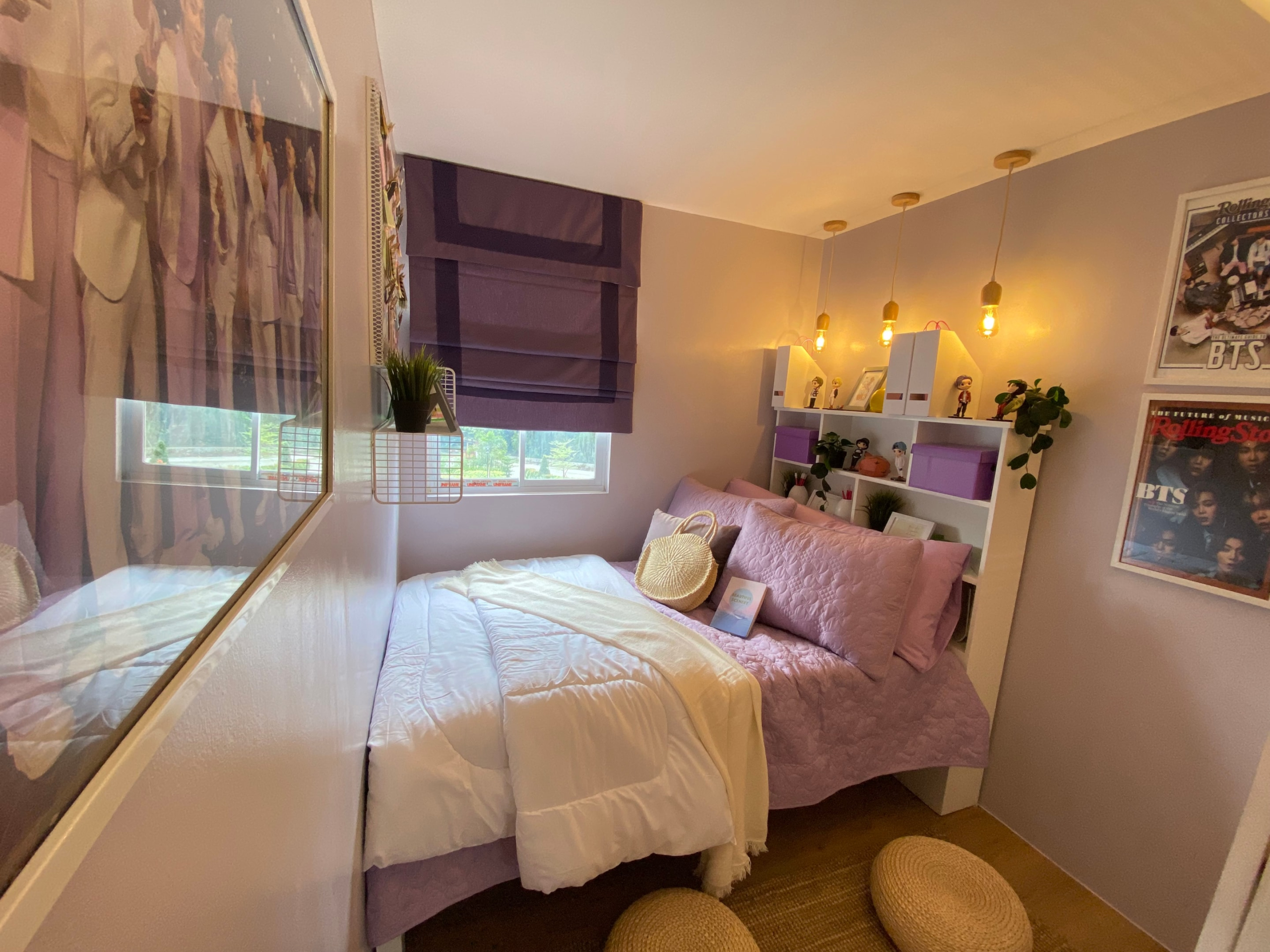
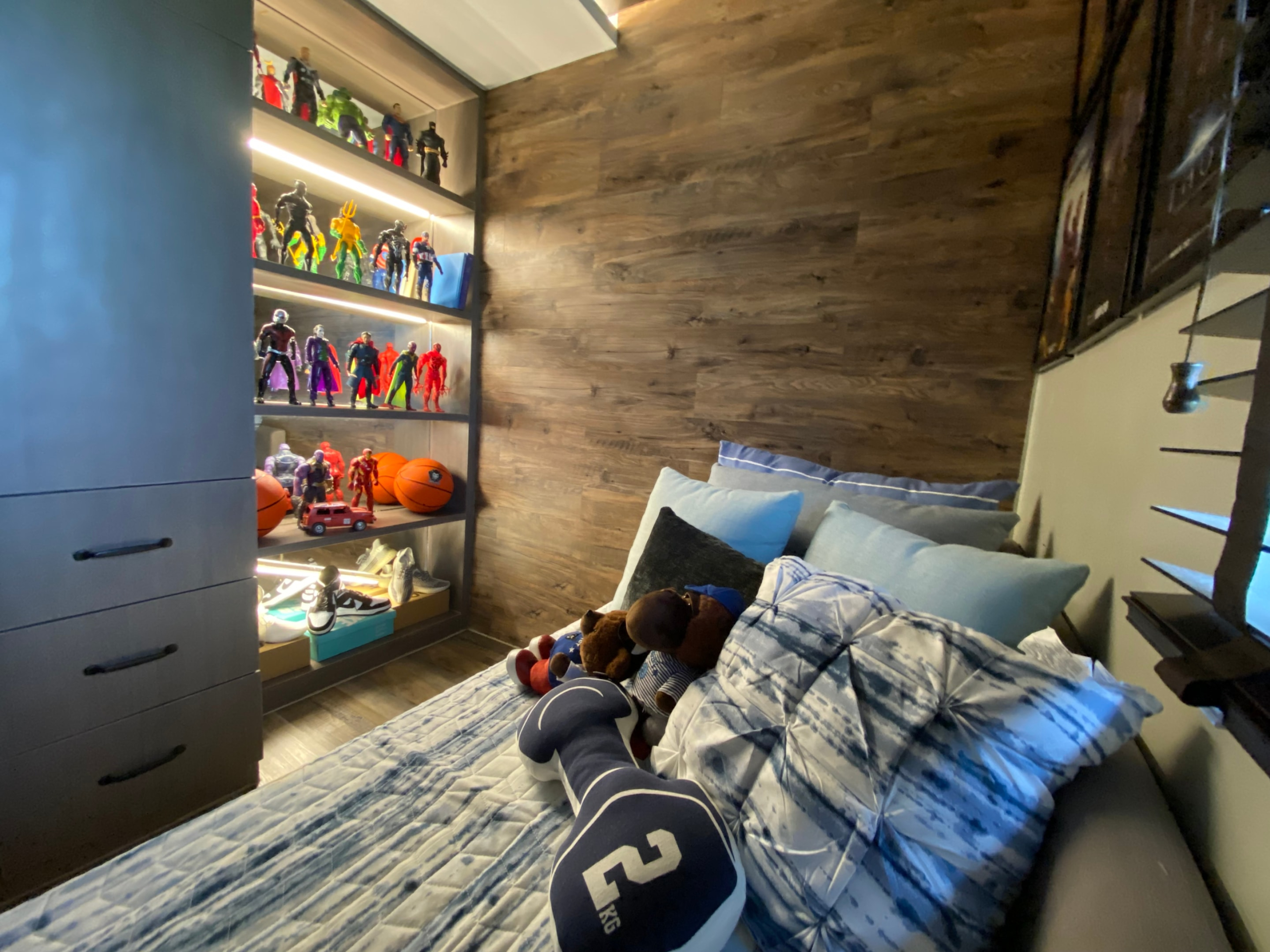
Let your children’s personalities shine through by adding their favorite decorations, toys, or artwork. A fun mural on the wall or a set of framed posters can make the room feel more personalized.
Fun, creative elements like a play tent or hanging fairy lights can make a shared space exciting for kids of all ages. You could also incorporate some playful furniture such as a rocking chair or a hanging chair to add whimsy to the room.
7. Keep the Layout Flexible
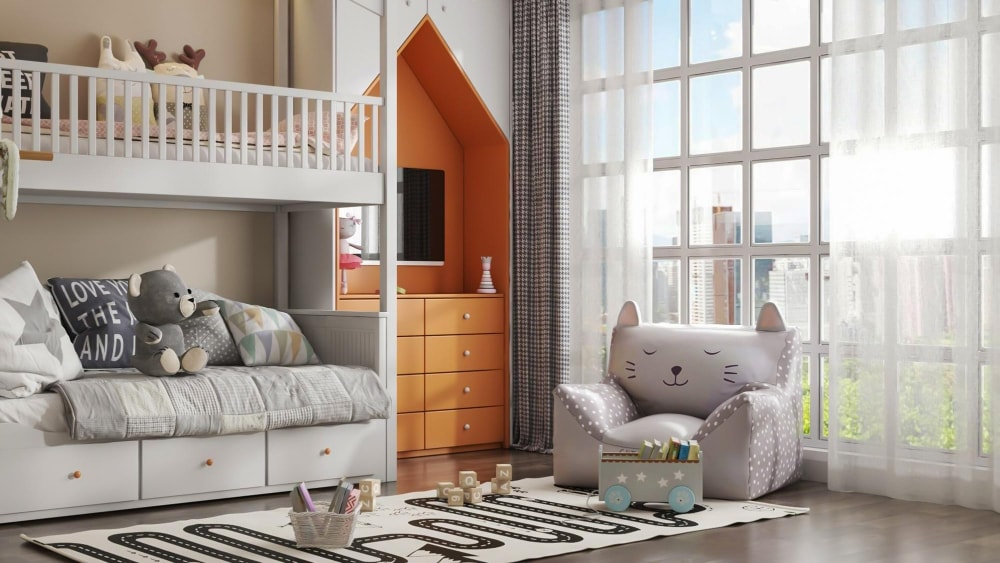
Since your children will grow and their needs will change, it’s important to keep the room layout flexible. Choosing furniture that can be moved or adjusted will allow the room to evolve as the siblings’ relationship and individual needs change.
For example, when the kids grow older and require more personal space, you can swap out the bunk beds for two beds placed side by side, or even upgrade to a double bed or twin beds for a more spacious sleeping area.
8. Focus on Safety

Safety should always be a priority in a shared kids’ bedroom, especially when using bunk beds or loft beds.
Ensure that the upper bunk has sturdy guardrails to prevent falls and that all furniture is anchored to the wall to avoid tipping. Also, keep toys and other items off the floor to prevent tripping hazards.
Proper lighting near sleeping areas, study desks, and play zones is crucial for both safety and functionality.
If you have shelves hung on the wall, do regular checks that they’re secure so there’s no risk of them falling.
Choosing the Right Home for a Shared Bedroom Experience

When it comes to finding a home that supports shared bedroom interior designs, Camella offers the perfect solution. With spacious homes and family-friendly layouts, Camella ensures that each child can enjoy their own space while also creating a sense of togetherness.
Whether you’re looking for a big room that can comfortably accommodate two beds, or a guest room that doubles as a shared kids’ bedroom, Camella provides homes that suit your family’s needs.
In a home in Camella, you’ll have more space to create the perfect bedroom environment for your kids, where they can grow, play, study, and share memories that will last a lifetime. Camella Homes is not just about building houses; it’s about designing homes where families thrive and siblings share special moments together.
Designing a shared bedroom for siblings requires thoughtful planning and an understanding of their individual needs. By focusing on maximizing space, creating personal zones, and incorporating flexible furniture, you can design a room that fosters cooperation and harmony, allowing your children to grow closer as siblings while enjoying their own unique spaces. And with a Camella home, you’ll have the ideal foundation for building those cherished memories.

Celebrate Life’s Milestones in Camella!
House and Lot & Condominium for Sale in the Philippines


